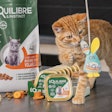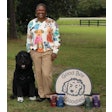
Pet product market analysts forecast that pet treat and chew sales in 2019 will hit US$6.7 billion in the United States. Packaged Facts analysts also predicted that the pet treat market would grow at a compound annual growth rate (CAGR) of 2.8% through 2023. The market researchers published their prognostications in the third edition of “Pet Treats and Chews in the U.S.”
Pet treat sales growth continues to outpace food. However, pet treat sales growth relative to previous years has slowed, according to Packaged Facts analysts. One cause may be that pet treat premiumization seems to have reached a point of saturation at which increased sales value per volume may plateau.
Safety, sourcing and other pet treat trends
Recent recalls of pig ear dog chews have led to an increased focus on sourcing of pet treats, according to Packaged Facts analysts. Pet treat labeling increasingly used “sourced in the USA” to assure pet owners of their products’ provenance. Safety and traceability have come to the forefront in products claims and labeling, as consumers worry following federal announcements.
Beyond recalls, the U.S. Food and Drug Administration advised all pet owners to avoid pig ear dog chews in the United States. As of August 27, the Centers for Disease Control reported 143 cases of human infection by Salmonella enterica related to exposure to pig ear dog treats. Of these, 33 people were hospitalized.
Packaged Facts noted the continued importance of biological benefits in pet treats. Beyond giving pets something tasty, pet owners want to give their pets something that will benefit the animal’s health and wellness. Dental chews and functional ingredients serve as examples of this. On the psychological benefits side, pet owners look to treats as a time to show affection and interact with their pets.
CBD pet treat trend
"CBD, or cannabidiol, supplements are in high demand in human markets, credited with treating conditions ranging from anxiety to asthma,” David Sprinkle, research director for Packaged Facts, said in a press release. “The use of CBD has crossed over into the pet market, with usage spiking after the passage of the most recent Farm Bill in December 2018, which took a significant step towards separating hemp and hemp-derived CBD from marijuana-based products.”


















